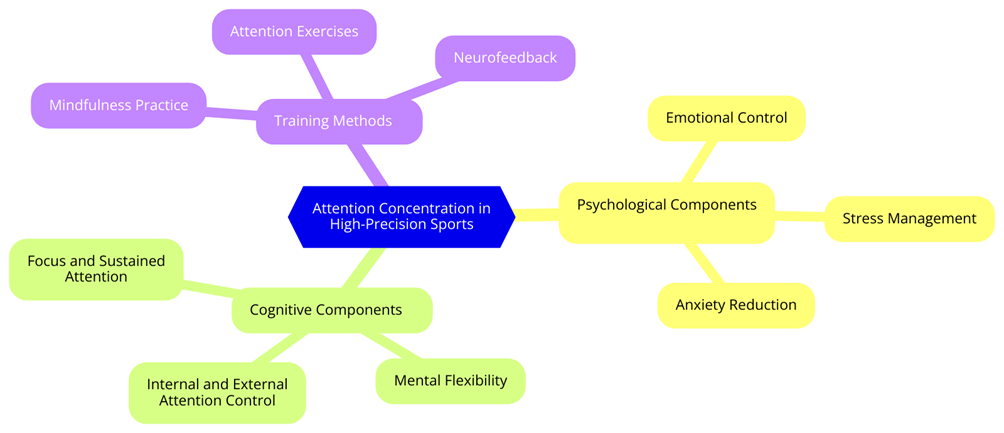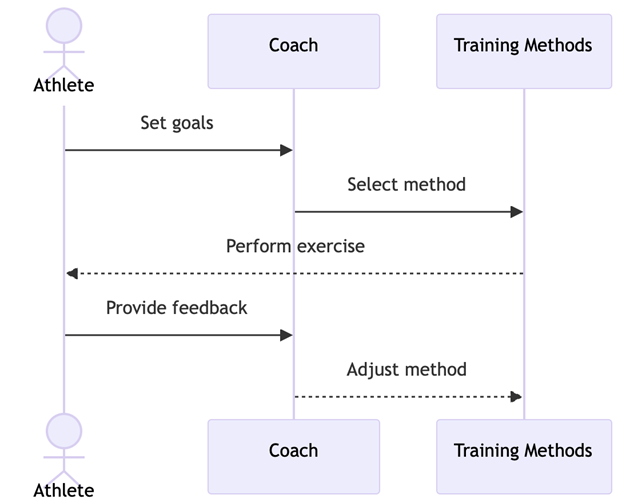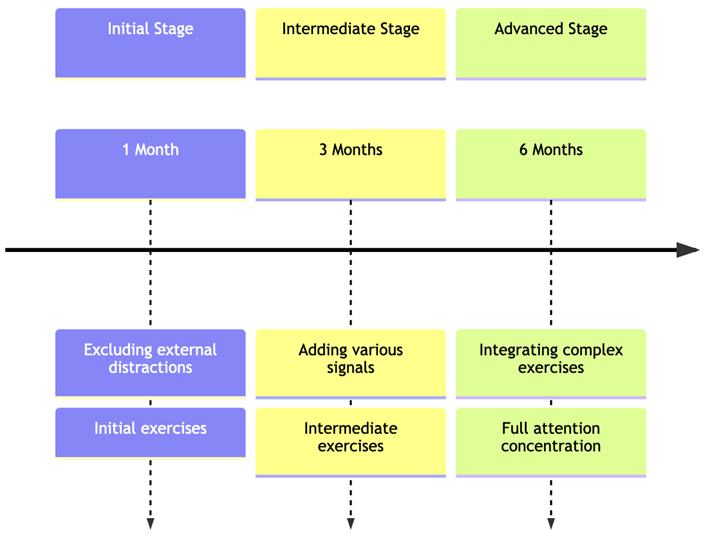Introduction
In the past decade, psychological and cognitive components of athletic performance have garnered significant interest in the field of sports science [1, p. 42-48; 4; 7; 12-15]. These qualities are crucial as they directly impact an athlete's ability to maintain focus and attention over extended periods and cope with the stress and anxiety induced by competitive environments. Specifically, precision sports (such as practical shooting, archery, biathlon, etc.) require not only physical skills but also a high level of mental concentration, emotional control, and flexibility [5, p. 47-51; 6, p. 115-121; 7; 8, p. 233-250]. All shooting sports can be categorized as sports competitions where psychological aspects substantially impact performance, classifying them as mental (intellectual) sports [1, p. 42-48; 2; 3, p. 227-231; 4; 5, p. 47-51; 12].
However, traditional training methods in precision sports primarily focus on the physical aspects of performance enhancement, often overlooking the significant influence of psychological and cognitive training (fig. 1) [5, p. 47-51; 7; 8, p. 233-250; 9-15]. This paper aims to fill this gap by proposing strategies based on the latest research in sports psychology.

Fig. 1. Attention concentration in precision sports
One of the key topics in the training of shooters is the issue of attention, with concentration and stability being among its most significant properties. Several studies have shown that emotional control exercised by athletes, combined with attention, can improve shooting performance [9, 11]. Minor disruptions in attention can lead to sharp changes in performance and mental blockages caused by panic attacks related to the technical execution of a shot. It is evident that for this reason, athletes competing in shooting sports require constant adequate psychophysiological training [3, p. 227-231].
The goal of this paper is to review modern strategies for improving attention concentration in athletes engaged in practical shooting.
1. Theoretical approaches to understanding the role of attention in practical shooting
The influence of the development level of various mental process properties on the effectiveness of sports achievements is discussed in numerous studies [1, p. 42-48; 4; 8, p. 233-250; 9; 12-15]. It has been established that one of the most important psychological and cognitive components of athlete preparation is attention, which enables the selection and focus on specific stimuli. Considering the specifics of different sports, there is a need to train and develop special attention properties that will enhance the effectiveness of sports performance in a particular discipline. At the same time, changing competitive situations can impose different demands on the nature of attention, highlighting the importance of developing athletes' abilities to manage their attention [5, p. 47-51; 8, p. 233-250; 12].
As previously established, the most universal and important components of attention are the ability to concentrate on significant stimuli, maintain this concentration over the necessary period, and quickly switch attention from one object to another. Shooting sports are no exception, as concentration and attention stability during aiming are frequently noted among the most significant properties, ensuring the accuracy and speed of task execution, which is particularly important in practical shooting [2; 3, p. 227-231]. Even minor disruptions in the attention process can lead to significant changes in performance. Attention control understood as the stability and concentration of a specific goal, can be conditionally divided into visual and mental in practical shooting. Mental attention is understood here as the concentration on internal sensations and maintaining the movement algorithm during transitions. Visual control over the target allows ignoring internal and external distractions, enabling the athlete to feel comfortable and confident [9].
In addition to the requirements for a high degree of attention concentration on the target, significant emphasis in shooting sports is placed on controlling motor coordination to minimize unnecessary movements. Considering the parameters determining the effectiveness of practical shooting, it should be noted that, unlike trap shooting, the result is based not on static muscle load but on the optimality of movement during transitions [2; 3, p. 227-231]. It is known that elite athletes can simultaneously maintain both external attention control on the target and internal control over kinesthetic images and movement representation. The combination of external and internal attention orientation in athletes is a relatively stable characteristic that ensures motor coordination, control over specific muscle groups, and optimal performance [4, 13].
Among the psychological aspects affecting attention concentration and, consequently, shooting performance, anxiety and arousal levels, reactions to negative emotions, confidence in one's skills, etc., are highlighted [7]. In particular, excessive self-control over movements and unwanted thoughts arising during competitions lead to a decrease in performance even among high-level athletes. Too deep an immersion in the control of one's movements in stressful situations can disrupt the automatism of sports activities and lead to its discoordination. To prevent this, it is recommended to focus attention on several key action components, which should facilitate overcoming adverse internal immersion and self-control [5, p. 47-51].
Existing research on the cognitive and physiological foundations of shooting tactics and attention concentration focuses on arousal/alertness activation. Based on electrophysiological methods, it has been established that the amplitude of oscillations in some cortical areas of the brain is associated with the psychomotor activity of the athlete and alertness activation at certain activity stages [8-15]. In particular, high activity in the occipital, temporoparietal lobes, and dorsolateral premotor cortex has been noted. In highly professional athletes, activity in the dentate nucleus of the cerebellum has also been noted, indicating that movement automation occurs through the integration of sensorimotor memory [9, 12]. Recently, the potential use of neurofeedback methods, influencing specific EEG frequency ranges, to improve cognitive flexibility has been discussed [11, 14]. It has been established that neurofeedback leads to faster reactions, sustained attention, and better emotion management, which can significantly contribute to athletes' performance.
Given the discussed aspects, it becomes evident that after identifying the features and components of attention important for practical shooting, the problem of improving memory properties through effective methods needs to be addressed.
2. Strategies for improving attention levels in practical shooting athletes
The technique of practical shooting involves a pattern of technical elements that must be executed in a short period to achieve a successful shot. From the perspective of mental processes, some of these elements overlap in space and time, which the human brain cannot simultaneously control. However, the growing trend towards applying psychological interventions to optimize sports performance has led to the development of several modern approaches to enhancing athletes' cognitive characteristics.
Recent international and domestic studies have shown that athletic performance can be significantly improved by applying mindfulness practices, including exercises aimed at training specific memory components [2; 3, p. 227-231; 9; 10; 12; 14]. Analyzing various cognitive and psychological techniques, we concluded that it is better to focus on simple yet effective exercises that stabilize emotional balance, increase focus, and enhance attention concentration (table).
Table
Main groups of exercises for improving attention levels in practical shooting athletes [2, 4, 14, 15]
| № | Type of Exercise | Exercise Task | Time | Execution Rules |
| 1. Concentration on Performing Voluntary Movements | ||||
| 1.1 | Sphinx | Concentrate on blocking involuntary movements of various muscle groups | 15 min | Sit in a chair and sequentially direct your mental focus on separate parts of the body (starting from the bottom) and stop any involuntary muscle movements until achieving complete stillness. |
| 1.2 | Immobilization | Concentrate on maintaining absolute stillness | Increase from 1 min | Sit in a chair and focus on immobility and the absence of any involuntary movements. |
| 1.3 | Sculpture | Increase from 1 min | Assume any pose and focus on immobility and the absence of any involuntary muscle movements. Starting level – "standing straight" pose. | |
| 1.4 | Mental Relaxation | Concentrate on relaxing various muscle groups | 5-7 min | Sit in a chair and sequentially direct your mental focus on different parts of the body (from feet to chest) and relax them. |
| 2. Concentrate on a Specific Action/Sequence of Actions | ||||
| 2.1 | Control of Thought Activity | Concentrate on suppressing thoughts | Up to 5 min | Suppress any thought activity, starting with one minute and then gradually increasing the time. |
| 2.2 | Deep Breathing | Concentrate on breathing movements | 5-10 min | Sit on a chair, keep your back straight, and perform simple breathing exercises, focusing on the breathing process, without being distracted by external stimuli or your thoughts. |
| 2.3 | Sounds | Concentrate on a specific sound | From 1 min per sound | Focus on a specific sound, such as someone's voice or the rustling of leaves, and keep your attention on it. Then intentionally switch to another sound. |
| 2.4 | Movie Reel | Concentrate on the day's events | 1 day | Imagine the last day of your life as a video recording, remembering events in all the smallest details, as if replaying the day. |
| 3. Concentration on Performing Arithmetic Actions | ||||
| 3.1. | Word Count | Counting the number of words | As needed | Count the words (mentally) in a paragraph of a book or magazine, followed by a control count. Gradually increase the volume of counting (1/2 page, page). |
| 3.2 | Backward Counting | Subtraction | Perform subtraction (mentally) from large numbers to small numbers. For example, subtract one from a thousand, and so on, saying the result out loud. | |
Incorporating these methods into the training process will help shooters develop more stable attention and concentration skills, improving athletic performance (fig. 2).

Fig. 2. Interaction Between Athlete, Coach, and Training Methods

Fig. 3. Progress in Attention Concentration
Based on the attention characteristics necessary for precision sports, we have conditionally divided the selected exercises into three groups aimed at improving various attention elements:
- Concentration on Performing Voluntary Movements: This characteristic ensures motor coordination, control over specific muscle groups, and optimal performance. Exercises in this group promote the automation of movements involved in shooting, allowing athletes to shift their attention control to the target and aiming process.
- Concentration on a Specific Action or Sequence of Actions: This characteristic helps suppress distractions and select necessary signals from the body (e.g., proprioception) or the environment (e.g., sounds, smells, wind) to adjust movement or aiming. These exercises also help focus on key action components, avoiding excessive internal immersion and self-control.
- Concentration on Performing Arithmetic Actions: This set of cognitive exercises aims at conscious attention focusing on internal sensations and maintaining the correct action algorithm. These exercises effectively overcome technical inaccuracies and psychological tension, which manifest as decreased dynamic attention functions: stability and switchability.
For more effective mastering of attention concentration exercises, it is necessary to create optimal conditions for their execution. At the initial training stage, exercises for developing attention concentration require the complete exclusion of external irritants; as the concentration level increases, various signals should be gradually introduced. It is also crucial for the athlete to focus on experiencing the present moment without getting involved in thoughts about past or future events [4, 14]. Regular and mindful practice of these exercises will enable the shooter to effectively eliminate unnecessary emotionality, direct energy towards internal focus, manage attention, and concentrate only on elements critical for making a successful shot.
Conclusion
The issue of attention is one of the leading topics in sports psychology, considering the specific competitive techniques and situations in each sport. For athletes engaged in precision sports such as practical shooting, key characteristics include a high level of resistance to distractions, rapid motor response speed, and the ability to maintain prolonged concentration on a specific object or task. Additionally, due to the nature of the competitions, professional success in practical shooting is linked to the ability to distribute attention as needed.
It is evident that alongside physical training and technique improvement, which are crucial for practical shooting, addressing the problem of enhancing concentration through effective methods is essential. By analyzing various cognitive and psychological techniques, a preference can be made for simple yet effective exercises that stabilize emotional balance, increase focus, and enhance attention concentration. A regular and mindful approach to performing these exercises will contribute to the effective management of attention elements, which are crucial for making a successful shot.

.png&w=640&q=75)